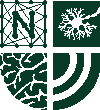Banca de DEFESA: RODRIGO DA MOTTA CABRAL DE CARVALHO
Uma banca de DEFESA de MESTRADO foi cadastrada pelo programa.DISCENTE : RODRIGO DA MOTTA CABRAL DE CARVALHO
DATA : 30/06/2025
HORA: 09:00
LOCAL: REMOTO NO LINK https://meet.google.com/omq-ibzh-ced
TÍTULO:
A Graph Neural Network Approach to Investigate Brain Critical States
PÁGINAS: 150
RESUMO:
Neural populations generate emergent activity patterns ranging from microscopic spikes to whole-brain dynamics, representing one of nature’s richest collective phenomena underlying cognition and behavior. Evidence suggests that these neurodynamics operate near a second-order phase transition—known as the critical brain hypothesis—where the system balances order and disorder, thus maximizing information processing and dynamic range. However, how this critical organization changes across conditions such as developmental stages or pharmacological interventions remains unclear. To address this, resting-state fMRI was coupled with a 2D Ising model to quantify distance from criticality. A graph neural network (GNN) was trained on simulated Ising networks to learn the mapping between connectivity patterns and the model’s control parameter—the Ising temperature. When applied to empirical fMRI data, this GNN inferred shifts between ordered and disordered states, detecting critical transitions in large-scale neural dynamics. To explore this approach, two empirical studies were conducted. Study I explored age-related differences in critical dynamics by comparing 188 typically developing children and adolescents with those diagnosed with attention-deficit/hyperactivity disorder (ADHD). Typical maturation was characterized by a monotonic decrease in Ising temperature, indicating a gradual shift from criticality towards a more ordered brain state. Study II quantified pharmacologically induced changes in brain entropy by estimating the Ising temperature during acute and subacute (24 hours post-administration) phases following ayahuasca ingestion, compared with placebo. This analysis examined whether ayahuasca shifts the brain toward a more disordered, paramagnetic regime, and whether such changes persist beyond the immediate drug effects. To bridge neural dynamics with subjective experience, subacute temperature changes were correlated with acute-phase subjective ratings from the Hallucinogenic Rating Scale (HRS). Results revealed an increase in Ising temperature during the acute phase, which partially persisted into the subacute period; notably, the persistence correlated with individual subjective experiences, particularly with the affective scores. These findings provide mechanistic support for the entropic-brain hypothesis, demonstrating that the GNN-derived Ising temperature serves as a sensitive, computationally efficient marker for detecting developmental and pharmacologically induced deviations from neural criticality.
MEMBROS DA BANCA:
Presidente - Interno ao Programa - 1672975 - JOAO RICARDO SATO
Membro Titular - Examinador(a) Interno ao Programa - 2139904 - CLAUDINEI EDUARDO BIAZOLI JUNIOR
Membro Titular - Examinador(a) Externo à Instituição - PEDRO ANTONIO MARTINEZ MEDIANO
Membro Suplente - Examinador(a) Interno ao Programa - 3041881 - BORIS MARIN
Membro Suplente - Examinador(a) Externo à Instituição - GIULIO RUFFINI FORES




